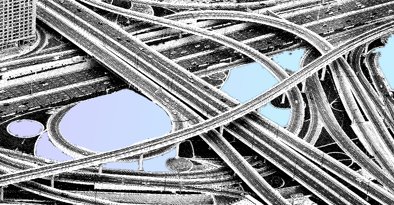What is Money Laundering?

Asa Bush
Creative Lead
Money laundering is the act of moving money earned from criminal activity through the financial system with the goal of turning profits with an obvious criminal source into funds that appear perfectly legitimate. Money laundering has three main stages: placement (getting money into the financial system), layering (moving it around in order to obscure its ultimate source), and integration (the spending of laundered money on goods, services, and investments).
Introduction
Let’s say you’re the kingpin of a massive organized crime ring. You are making millions a week from your criminal activities, most of it arriving in the form of cash. You want it all: new houses, new cars, private jets, etc. But how are you going to pay for all that stuff? Lug around heavy duffel bags of cash and count it out every time you have to make a purchase? It’s not going to be long before people start to wonder where that money is coming from. (Though they will be pretty sure how you threw out your back.)
That’s the function of money laundering: to obscure where the profits of crime are coming from. Criminals will employ an endless series of tactics to launder money, which is why for our purposes it’s best to understand the laundering process as a whole.
From the perspective of the financial industry, money laundering contains three main steps:
- Placement: the gathering and introduction of ill-gotten gains into the financial system.
- Layering: Moving funds around inside the financial system in order to hide their original source
- Integration: spending or otherwise using laundered money in a legitimate manner.
These three steps are universally accepted by industry training resources and certification programs as the strategic backbone of a wide array of money-laundering tactics. Why is having a common understanding of how money laundering works important? Simple. Understanding the different stages of money laundering can help financial institutions develop better detection and preventative strategies.
With that in mind, let’s explore each stage in greater detail.
The Three Stages of Money Laundering
Placement
Aggregating money and getting it into the financial system.
Money is not particularly valuable unless you can use it. In modern society, using money generally means interacting with the financial system: storing money securely (or “saving”) and making payments (“spending”) are two core functions of that system.
It is certainly possible to make payments with cash while avoiding the watchful eyes of the financial industry. Cash payments are hard to track. But while this is fine for smaller transactions, it doesn't scale particularly well. Spending a few hundred – or even a few thousand – dollars in cash might not be unusual, but spending tens of thousands or even millions in cash is a much more difficult proposition.
This is why, if you are a criminal handling more than a few hundred dollars from crimes of profit, you are constantly looking for ways to move that money into the financial system, whether through cash deposits, cryptocurrency exchanges, or other entry points.
In short: “Placement” sees criminal proceeds introduced into the financial system.
Layering
Moving money around to obscure its origins.
If laundering ended once criminal proceeds entered the financial system, law enforcement and compliance teams would have a much easier time. All large financial transactions are looked at by financial institutions, meaning that if a criminal deposits $250k in cash into a bank account and then immediately goes out and buys a fancy sports car using the account credit card, the bank will take notice.
In response to this, criminals engage in money laundering’s second step: layering. Sophisticated money launderers will try all sorts of things in an effort to hide the true source of their profits. Managing high-cash businesses (like restaurants), creating non-existent shell companies, or simply moving money back and forth between accounts owned by fictitious individuals, are just a few of the things launderers will do to obscure the true origin of their profits. Al Capone famously owned a number of laundromats, and made it look like his money was coming from these laundry businesses to hide the fact that it was coming from crime. The term “money laundering” comes from this famous example, but laundromats are one of many different approaches that criminals will try.
In short: “Layering” sees criminals working to hide the provenance of criminal proceeds by moving it around the financial system in a confusing or secretive manner.
Integration
Using laundered funds to make purchases that the criminal wants.
Once the criminal believes the source of their money is hidden, they will try to use it to buy things. Think about the last bank heist movie you watched: this is the scene where a character is warned not to make showy, extravagant purchases. No new car, no flashy outfits. The reason for this is that criminals are aware that these purchases can draw unwanted attention.
The desire to spend is a powerful one, however, and the integration stage is an important one for the detection of money laundering: strange purchases and money movements can sometimes be easier to spot than the first two stages of laundering. And using this as a starting point, investigators can begin the work of reverse engineering the layering stages in order to expose the criminals responsible.
In short: Criminals working on “integrating” laundered money will attempt to turn those into legitimate purchases or investments.
Wrap Up
Understanding what money laundering is, and being familiar with the process of placement, layering, and integration, helps us develop better ways to fight financial crime. Given how different the three stages of money laundering are, it stands to reason that we should use different detection and prevention tactics for each.
Now that you have a general understanding of what money laundering is and how it works, we encourage you to explore some of our related articles:
RECOMMENDED ARTICLES
Stay Connected
Subscribe to receive new content from Hummingbird


